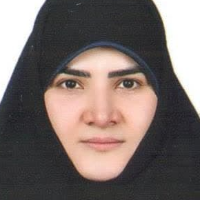Evaluation of good Quranic verses in some Persian translationsBased on Carmen Grosss Model
Translation evaluation is one of the methods of critique that is used to determine the quality level of translated texts. The use of Qur’anic or moderate interpretations for unpleasant concepts has led to recognition of these interpretations and their influence on Quranic textures, and raised the problems of translating these interpretations into different languages including Persian. The exists the need for translators’ knowledge of the methodology of Qur’anic discourse, translation tools, and matching equivalents. In this comparative, analytical and descriptive study, Persian translations of these interpretations are presented using the second level of the Gaussian translation-grapheme syntax assessment model. The assessment of the translation of these interpretations in four well-known translations, from Persian literal and detailed translations, namely, Qumashi, Ma’azi, Ayati and Makarem Shirazi’s translation, especially in the use of examples of compassion, chastity, and eulogy, suggests that cultural differences existing between the Persian and Arabic languages, and equivalence at the lexical and grammatical levels are among the most important sources of challenge in this field. In rhetorical translation, the rhetoric of the structure of these interpretations is denied, and based on this kind of translation, the hidden meanings of Qur’an remain, verbal similarities in Persian are restricted, and the adequacy and acceptability are reduced. The term “good” Qur’anic terminology is a summation between two concepts; the first concept: idiomatic terms; the second concept: the stylized or good meaning of the term (nickname, word of mouth) that is defined in the new semantics of science: an expression that has a certain meaning and is obtained from the sum of words (Al-Bebalaki, 1990, p. 235; al-Qasemi, 1979, p. 25; Abuzlaal, 2006, p. 1 & 68). The stylization also means using a word or phrase as a mask or cover to cover painful, ugly and unpleasant concepts (Casas Gomez, 2009, pp. 725-739). For this reason, the compound term is the reference through a linguistic and explicit method. It seems to have become commonplace among linguists to use linguistic tools for what is ugly and banned in society, such as: disease, death, sexual relations, some parts of the body, poverty, natural disasters and some sensory and spiritual traits, etc. to make them interpreted as unobtrusive and acceptable. Regarding the stance of linguistic or stylized interpretation, it should be said that in the process of establishing communication, it is a positive and useful tool because it removes barriers from the ideal way of communication, promotes the level of dialogue, and transcends the boundary of passage implicitly and implicitly (Abu Khazdar, 2013, p. 10; Abuzlaal, 2006, p. 1 & 68; al-Qasemi, 1979, p. 25). It also brings about artistic dimensions through a rhetorical structure such as calligraphy, metaphor, and likeness. The Holy Qur’an, as the heavenly book at the height of eloquence and rhetoric, has a strong link with a well-interpreted or stylized discourse (Sini, 1996, p. 11). On the other hand, translation is institutionalized and expanded through the process of theorizing in the mind. In the translation process, an interpreter has two or more different languages; therefore, it is necessary to study and compare all levels (micro and macro) of these languages, to analyze them in the original text, then, to combine them in the context of the destination. The method for transfer from the source language to the target language is very important and requires the acquisition of translation techniques and strategies (Mobaraki, 1392, p. 151). The proper understanding of the concept of the text is the most important stage of correct equivalence and it is possible that the misunderstanding of the content generally changes the meaning of a text in general. Therefore, the translator must first and foremost, on the basis of a proper understanding, compare the words and phrases of the text to the correct equation, then, proceed to the next steps of the translation. Among these views, is the model of translation of Mrs. Carmen Grosses, one of the best and most recent models for the evaluation of literary translation, which is designed in four levels (lexical, grammatical, discourse, and lightness), in which the relevance of the translation of the text is an important issue. In this research, we aim to evaluate the use of the second level of the Garses-semantic grammatical level on four of the well-known translations, both literal and implicit types in Farsi (Elahi Qomshei, Ma’azi, Ayati and Makarem Shirazi) to the most important allegations of these translators, in the translation of the Qur’anic terminology to Farsi, and present a suitable way to solve the existing lexical challenges when translating from Arabic to Persian.
- حق عضویت دریافتی صرف حمایت از نشریات عضو و نگهداری، تکمیل و توسعه مگیران میشود.
- پرداخت حق اشتراک و دانلود مقالات اجازه بازنشر آن در سایر رسانههای چاپی و دیجیتال را به کاربر نمیدهد.




